Russia is working to reduce its dependency on Europe by strengthening domestic industry and ties to the Far East. It’s a work in progress.
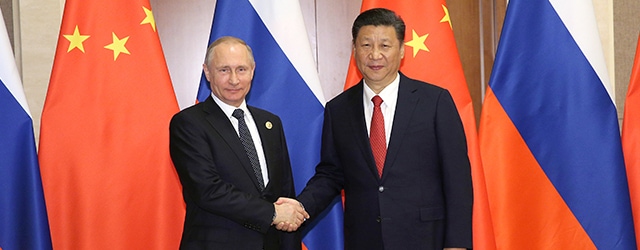
Vladimir Putin broke with the West politically three years ago, when he responded to a change of government in neighboring Ukraine with de facto invasions of Crimea and the Donbass industrial heartland. The consequences of this demarche have been exhaustively studied ever since. Less attention, however, has been paid to a corresponding Russian campaign to reduce its economic dependence on the advanced democracies, particularly of the European Union, by replacing them with Asia as an engine of trade and investment, or with domestic production of goods previously imported.
Three years on, this economic strategy has yielded some results, but falls well short of the transformation the Kremlin had advertised. Russian agriculture shows the brightest picture. Spurred by a 25% devaluation of the ruble against the dollar, grain production has nearly doubled, catapulting Russia into an unlikely position as the world’s No. 1 grain exporter last year. Food consumption has also shifted to domestic sources, pushed by “counter-sanctions” that bar imports from the EU. No such renaissance is visible in manufacturing, however.
On the investment side, Russia Inc. has cut its vulnerabilities to Europe through a shocking deleveraging equal to nearly one-quarter of gross domestic product. But the idea that Japan and China would pour capital into Russia as EU banks and bondholders retreated has proved illusory. And the markets for Russia’s core export, oil and gas, will take decades to reorient as they are largely determined by multi-billion dollar pipelines. “Russia still sells fuel and buys consumer goods, and the destination for its fuel is fairly fixed,” says Tom Adshead, chief of research for Macro-Advisory Ltd in Moscow. “I don’t think anyone seriously thought that could be changed around quickly.”
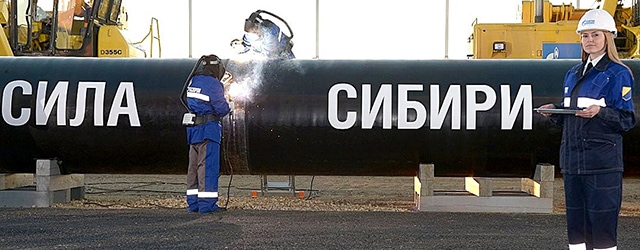
When street protestors in Kiev overthrew Ukrainian president Viktor Yanukovych in February 2014, Russia had the large majority of its economic eggs in one basket—the wrong basket for Putin’s new political imperatives. Foreign policy types like to focus on the interplay between Washington and Moscow, but the dominant bread-and-butter partner for the Kremlin was Europe. Russia racked up $427 billion in two-way trade with the EU in 2013, nearly five times its volumes with China. EU nations accounted for three-quarters of Russia’s foreign direct investment, and at least that proportion of the $700 billion or so Russian corporations owed abroad.
With EU governments imposing successive waves of sanctions over Russia’s Ukraine adventures, Putin belatedly discovered Asia as a counterweight. By May 2014, he and president Xi Jinping were signing an accord meant to bring $400 billion worth of Russian gas to China over three decades, once a $55 billion new pipeline was built. Moscow and Beijing inked dozens of other agreements in fields from lumber to space exploration. “Our countries have done a huge job to reach a new historic landmark,” Putin announced. “China has firmly settled in a position of our key trade partner.”
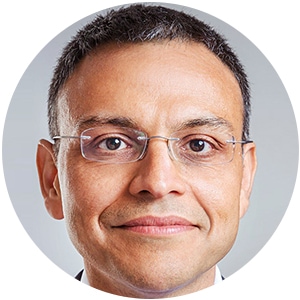
Russian financiers meanwhile talked up China as an alternative financial engine to Europe. In November 2014, the chairman of No. 2 state bank VTB, which was included in Western sanctions, threatened to delist his company’s shares from the London Stock Exchange in favor of Shanghai. He didn’t, but VTB is pursuing deeper relations with China. “During the last year we saw increasing demand from customers for trade with Asian counterparties—China in particular,” says Igor Ostreyko, managing director of Trade & Export Finance for VTB. “China is the only one of Russia’s top trading partners with which trade volume grew in 2016.”
A good place to reality-check these Eastern ambitions is the Russian Direct Investment Fund. Launched in 2011 with a $10 billion stake from the Kremlin, the RDIF was intended as an on-ramp for global private equity to enter Russia and fund then-president Dmitry Medvedev’s campaign to escape the country’s “shameful” natural resource dependency. The fund’s Harvard MBA-toting chairman, Kirill Dmitriev, convinced Blackstone Group supremo Stephen Schwarzman and TPG’s David Bonderman to join an advisory council.
The private equity onslaught never happened, though. “Private equity funds have been very active on buyouts with cheap financing, but Russia is not a buyout market,” explains Kishan Pandey, an Indian-born deputy CEO at RDIF. Post-2014, the fund executed a strategic pivot of its own toward cooperation with sovereign wealth funds—from China, the Persian Gulf and elsewhere.
The results are real, if modest. The RDIF has lured a total of 768 billion Russian rubles ($13.5 billion) into Russia, concentrated on much-needed infrastructure projects like the Vladivostok airport or Ust-Luga port outside St. Petersburg. The fund and its sovereign allies have made a smattering of consumer-sector investments too, including children’s store chain Detsky Mir and food retailer Lenta. But $13.5 billion is a pittance compared to Russia’s net outflows to European creditors over the past three years, estimated above $200 billion. And the paucity of private co-investors raises questions about whether the foreign funds’ motivations are economic or political. “I would say it’s a gradual process,” Pandey says of his adopted country’s tilt eastward and southward. “It takes time.”
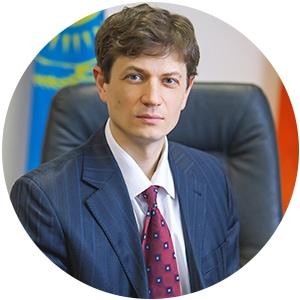
Other indicators confirm that redirecting Russia’s economy is a gradual process at best. Bilateral trade with China, which was supposed to exceed $100 billion by now, only reached around $69 billion last year, according to China, thanks in part to sinking oil prices. Private finance from Asia to Russia has been nearly nonexistent. “The idea that Chinese lending could somehow replace sanctions [losses] was scotched pretty quickly,” Adshead says. “Chinese lenders were scared to death by sanctions and wouldn’t touch Russian risk.”
The signature Russia-China cooperation project, Gazprom’s Power of Siberia pipeline, is plodding its way across the tundra, but analysts wonder whether it will end up being a $55 billion white elephant. “The pipeline may be a little redundant if it takes 10 years to build, given the alternatives from liquid natural gas and shale,” says Yulia Tseplyaeva, chief economist at Russia’s dominant state-owned bank, Sberbank. “They talk about Power of Siberia every two hours on the television, but I would prefer to be proud of something once it’s finished.”
The second front in Russia’s war for economic independence is import substitution. Nostalgia for the self sufficient Soviet economy when “we made everything ourselves” blends well with the country’s bristling post-2014 political mood, and Putin has promised to head back toward those good old days. “For us import substitution is not a fetish,” he proclaimed at a 2015 economic conference. “It concerns the most important technologies.”
The Kremlin says it has invested 250 billion rubles in replacing foreign goods, and it stimulated substitution indirectly with “counter-sanctions” that ban EU food imports. Domestic production got a bigger boost from the ruble’s slide, which was driven by world oil prices rather than Kremlin policy.
Still, extricating Russia from import dependency has proven easier said than done. Good harvests and the cheap ruble may have ignited output of grain and related inputs like fertilizer. But the further one goes up the chain of “important technologies,” the less Russia has been able to substitute. Imports’ share of food consumption has dipped modestly, from 42% to 38% by value, Sberbank’s Tseplyaeva says. Russia is steadily producing more of its medicines domestically, an objective in place well before 2014, though know-how may still be licensed from abroad. Japanese conglomerate Mitsui’s recent purchase of 10% of Moscow-based R-PHARM for $200 million is an encouraging sign for this industry, though clearly a cautious one.
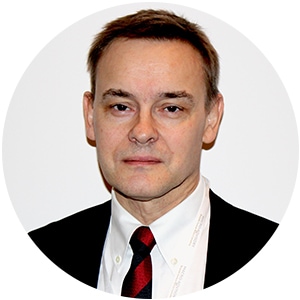
But Russia shows little sign of becoming competitive in the heavier machinery and high-tech equipment needed to accelerate a light-industrial renaissance. That makes the depreciated ruble as much a burden as a blessing, says Yaroslav Lissovolik, chief economist at the Eurasian Development Bank, a multilateral lender whose biggest shareholder is the Russian government. “We are already seeing diminished returns from ruble depreciation because Russian industry needs to upgrade capital equipment, and for that we need a stronger, or at least stable, ruble,” he says. “Economic policy now supports depreciation, but that is completely the wrong paradigm.”
The most curious element of Russia’s macroeconomy since 2014 is the enormous outflow of capital to (mostly) European creditors. Russia Inc. has survived this deleveraging much better than one might expect, with no bankruptcies among banks or marquee companies. Corporate profits jumped by 38% in 2016 even as the economy shrank for a second year in a row, Tseplyaeva reports. Banks are generally well capitalized. “There is now an oversupply of dollars in Russia,” RDIF’s Panjey says. “The banks are flush, but no one wants to borrow in dollars.”
Nor has the state drained its coffers to rescue industry, as some analysts expected. The National Wealth Fund, the Kremlin’s rainy-day stash, still holds $73 billion, just slightly decreased from $87 billion in early 2014. (The Reserve Fund, which directly supports the federal budget, has been depleted by nearly $70 billion.)
Part of the answer to this riddle is that an unknown but substantial percentage of that “European” capital was not European at all, but Russian money recycled through EU tax havens like Cyprus and Luxembourg. A Kremlin “on-shoring” campaign has cut down this round-tripping considerably, boosting domestic banks and making their operations somewhat more transparent. “This was a way to force the financial sector to grow up a little bit,” Macro-Advisory’s Adshead says. “It was a cold-turkey [treatment] that Russia needed to go through.”
Another part is that the raw materials exporters that dominate Russia’s corporate sector were big winners from devaluation, earning more in hard currency relative to their ruble costs back home. The average Russian was a big loser, giving consumer-facing domestic industry little reason to invest in the face of shrinking demand. The dynamic small-business sector, what’s left of it after the post-2014 recession, still relies heavily on informal financing from family, friends or suppliers, only tangentially affected by formal flows through banks and bond markets.
What hasn’t happened is a rush of Asian capital to replace the payouts to the West. “The geography of investment should become somewhat more balanced in time,” Eurasian Development Bank’s Lissovolik says. “But in the meantime Russia still needs Europe.”
VTB’s Ostreyko acknowledges that despite clients’ new passion for China, the EU still accounts for 42% of Russian trade: “We highly value the relationships we have with European banks, which help us provide clients targeted solutions for trading with the EU.”
Putin has efficiently raised Russia’s geopolitical profile over the past few years, applying minimal military force in theaters where other powers were not inclined to resist—Ukraine, Syria—mixed with plenty of rhetorical swagger and some talented in-house computer hackers. Moscow is a force to be reckoned with again. The Russian electorate, smarting from the perceived Cold War defeat and loss of empire, has apparently warmed to this policy even if it costs them. Making Russia more economically autonomous will not be nearly so easy, though.



